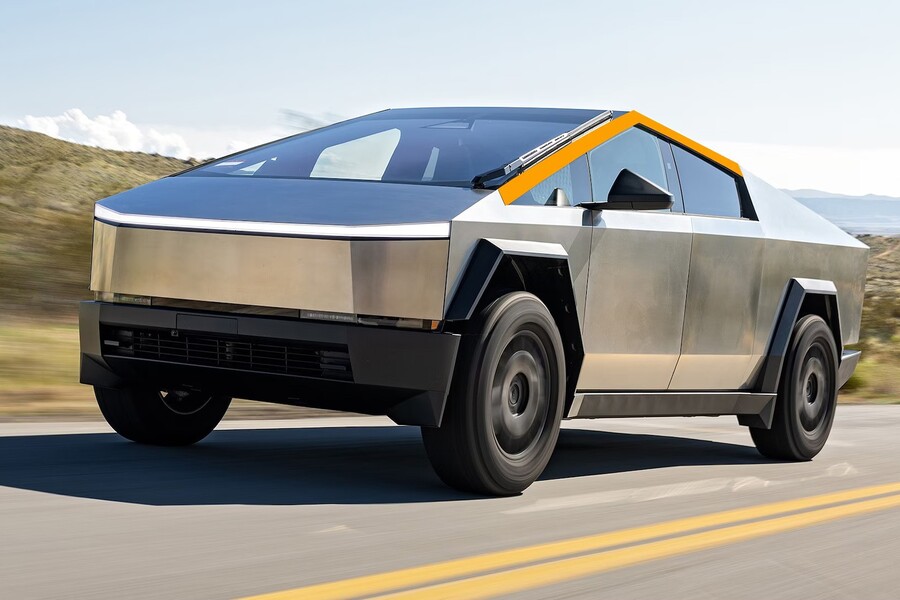A recent recall of the Tesla Cybertruck has shed unexpected light on the highly anticipated electric vehicle’s real sales numbers—a figure that Tesla has closely guarded since production began. According to a filing by the National Highway Traffic Safety Administration (NHTSA), 46,096 Cybertrucks are being recalled due to a potentially dangerous defect in the vehicle’s trim panel adhesive. But the bigger revelation may be how many of the trucks Tesla has sold.
The recall affects every Cybertruck built between November 13, 2023, and February 27, 2025. That date range covers the truck’s entire production run to date, strongly suggesting that 46,096 units have been manufactured and likely sold. This number offers the clearest public estimate yet of Cybertruck sales—data Tesla has avoided releasing directly by lumping its figures in with slower-selling Model S and X vehicles.
The recall itself centers on the faulty adhesive used to secure the stainless steel trim panels on the cant rails—the long structural beams above the side windows. NHTSA reports that the glue is prone to environmental embrittlement, meaning it could fail over time. If that happens, the heavy stainless steel trim could detach and become a hazard to other drivers.
Though vehicle recalls are hardly unusual for Tesla, the 46,000+ figure caught the attention of industry analysts. To put that into context: Honda sells that many CR-Vs in a matter of weeks, while Ford’s F-Series trucks hit similar numbers in just three weeks. Ford sold around 33,510 electric F-150 Lightnings in 2024, giving Tesla’s Cybertruck a slight edge, albeit over a shorter sales period.
Tesla’s overall vehicle deliveries in 2024 were nearly 517,000 units, representing a 23% drop from 2023. Analysts attribute the slump to CEO Elon Musk’s increasing political profile and ongoing controversies, which have driven away some buyers while attracting others. Vandalism targeting Tesla vehicles and dealerships has made headlines while dropping resale values for used Teslas have rattled longtime customers.
The Cybertruck was designed to push the boundaries of the electric pickup market. Though it lost out to the more traditional Ram 1500 in MotorTrend’s 2024 Truck of the Year contest, it did receive the publication’s Tech Award for its innovative steer-by-wire system—a notable improvement over the Model S Plaid’s widely criticized yoke steering wheel.
Despite these advancements, the Cybertruck has struggled to find mass-market traction. Its bold, angular design has proven divisive, and electric pickups still face practical limitations, especially in towing range. Tesla fans hoped the truck would do for EV pickups what the Model 3 did for EV sedans. But based on production numbers disclosed in the recall, that revolution has yet to arrive.
Political influence has added further complexity. Some conservative commentators have urged followers to purchase Teslas in support of Musk, but purchasing a Cybertruck remains tricky in states like Texas. While the state is home to Tesla’s Gigafactory and remains one of the largest truck markets in the U.S., laws requiring sales through franchise dealers create barriers to direct purchases.
Still, Tesla has made progress in design and production. The Cybertruck’s sharp handling, unique features, and futuristic appearance have garnered a devoted fanbase. However, whether it can cross over into broader consumer appeal remains an open question.
The NHTSA says Cybertruck owners should look out for increased cabin noise—a sign the cant rail trim may be coming loose. Owners will receive recall notices soon, and Tesla will repair the issue with a more robust adhesive.
While the recall raises safety concerns, the incident also provides a rare look behind Tesla’s veil of secrecy. With 46,096 trucks confirmed as affected, the number likely represents Tesla’s total Cybertruck output to date.
Compared to Tesla’s other vehicles and even rival electric pickups, the Cybertruck’s numbers aren’t terrible. But they also don’t represent the explosive growth some investors and fans anticipated. Whether the truck’s edgy styling, Musk’s polarizing reputation, or practical EV limitations are to blame, it’s clear the Cybertruck’s road to dominance is steeper than expected.
In the meantime, drivers are urged to remain cautious. And if you’re following behind a Cybertruck on the freeway, maybe give it a little extra space—just in case one of those stainless steel panels decides to go airborne.

